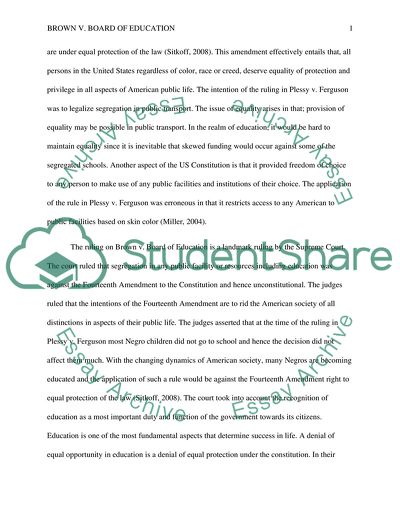Cite this document
(“Brown v. Board of Education of Topeka Case Study”, n.d.)
Brown v. Board of Education of Topeka Case Study. Retrieved from https://studentshare.org/law/1584505-legal-case-studybrown-v-board-of-education-of-topeka1954brown-1
Brown v. Board of Education of Topeka Case Study. Retrieved from https://studentshare.org/law/1584505-legal-case-studybrown-v-board-of-education-of-topeka1954brown-1
(Brown V. Board of Education of Topeka Case Study)
Brown V. Board of Education of Topeka Case Study. https://studentshare.org/law/1584505-legal-case-studybrown-v-board-of-education-of-topeka1954brown-1.
Brown V. Board of Education of Topeka Case Study. https://studentshare.org/law/1584505-legal-case-studybrown-v-board-of-education-of-topeka1954brown-1.
“Brown V. Board of Education of Topeka Case Study”, n.d. https://studentshare.org/law/1584505-legal-case-studybrown-v-board-of-education-of-topeka1954brown-1.


